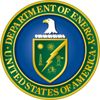This map shows potential future suitable climate for a specific species using the NCAR CCSM3 model and the SRES A1B future climate scenario. The time periods modeled are the present, 2010-20-39, 2040-2069 and 2070-2099. The mapped parameter is the probibility of occurance for the species represented.
NCAR CCSM3 Model Specification
Collins, W. D., Bitz, C. M., Blackmon, M. L., Bonan, G. B., Bretherton, C. S., Carton, J. A., Chang, P., Doney, S. C., Hack, J.J., Henderson, T. B., Kiehl, J. T., Large, W. G., McKenna, D. S., Santer, B. D., and Smith, R. D. 2006. The Community Climate System Model Version 3 (CCSM3). Journal of Climate 19; 2122-2142.
Model Strengths when modeling climate for the Southwestern United States
- Preserves spatial structure of seasonal precipitation across the West
Model Constraints when modeling climate for the Southwestern United States
- Exaggerates average monthly temperature range
- Overestimates Spring and Summer temperatures throughout most of the west
- Shows cooler than observed November-March temperature for southern New Mexico
- Depict much wetter November-March conditions than observed
- Shows much dryer than observed July-September conditions
- Much dryer than observed over the whole Southern Colorado Plateau
See Garfin et al 2010 for a detailed discussion of these models and the selection methodology.









